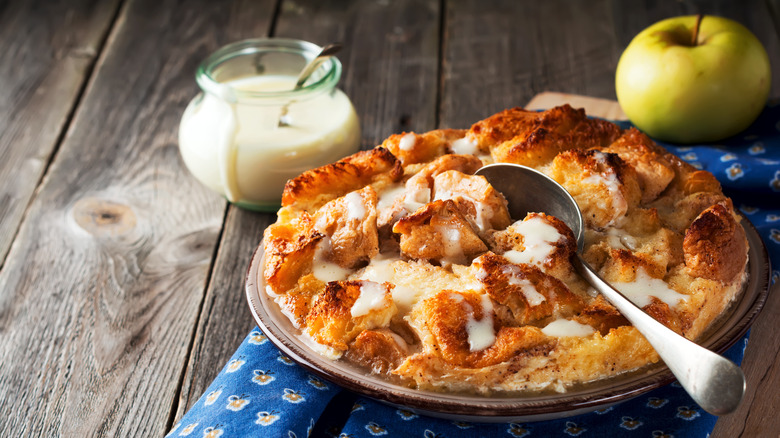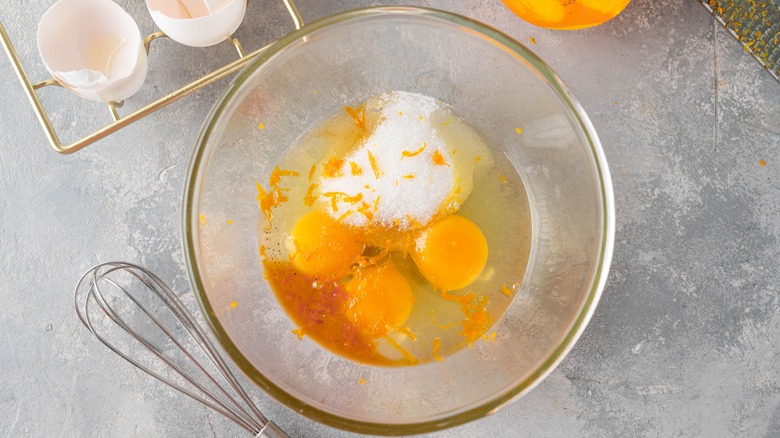Why Orange Zest Is A Must-Have Ingredient For Bread Pudding
Oranges have a flavor that hardly ever gets lost or overpowered in a dish or baked good, and it's versatile enough to be used in both sweet and savory dishes. But while the juice has its place in savory sauces and in salad vinaigrettes, oranges are most often used in desserts. The zested form of it is a main ingredient in many pies, tarts, fruit cakes, and of course cranberry orange muffins. Without it, they just wouldn't taste the same.
Per Bon Appétit, even if the original recipe doesn't call for it, orange zest can be used in practically any fruit-based dessert because it adds an extra layer of flavor and a unique tanginess. Key lime pie and lemon bars are among the outlet's fruity recommendations, but as it turns out, a less-obvious dessert, bread pudding, benefits from orange zest too.
Though a basic bread pudding consists of bread soaked in custard, Epicurious says a bit of fresh orange zest can take the flavor to the next level.
Will orange zest make bread pudding taste sour?
Although orange zest, according to Food Crumbles, is essentially concentrated orange, adding it to bread pudding custard won't make it taste sour or even citrusy. Instead, as Epicurious explains, the zest serves to brighten up the otherwise rich, heavy custard and balance out the sweetness with acidity. For recipes that include vanilla, cinnamon, or nutmeg, the orange zest will also bring out their natural flavors, elevating the dessert as a whole.
If you'd rather orange be the star of the dish rather than solely a flavor enhancer, Martha Stewart's method (via Instagram) may be the way to go. In her recipe for brioche bread pudding, she includes both orange zest and orange juice, plus dried prunes, cranberries, cherries. But whether you choose to add a little orange zest or go all out like Stewart does, the bread pudding that results will taste all the more flavorful with the extra ingredient.

